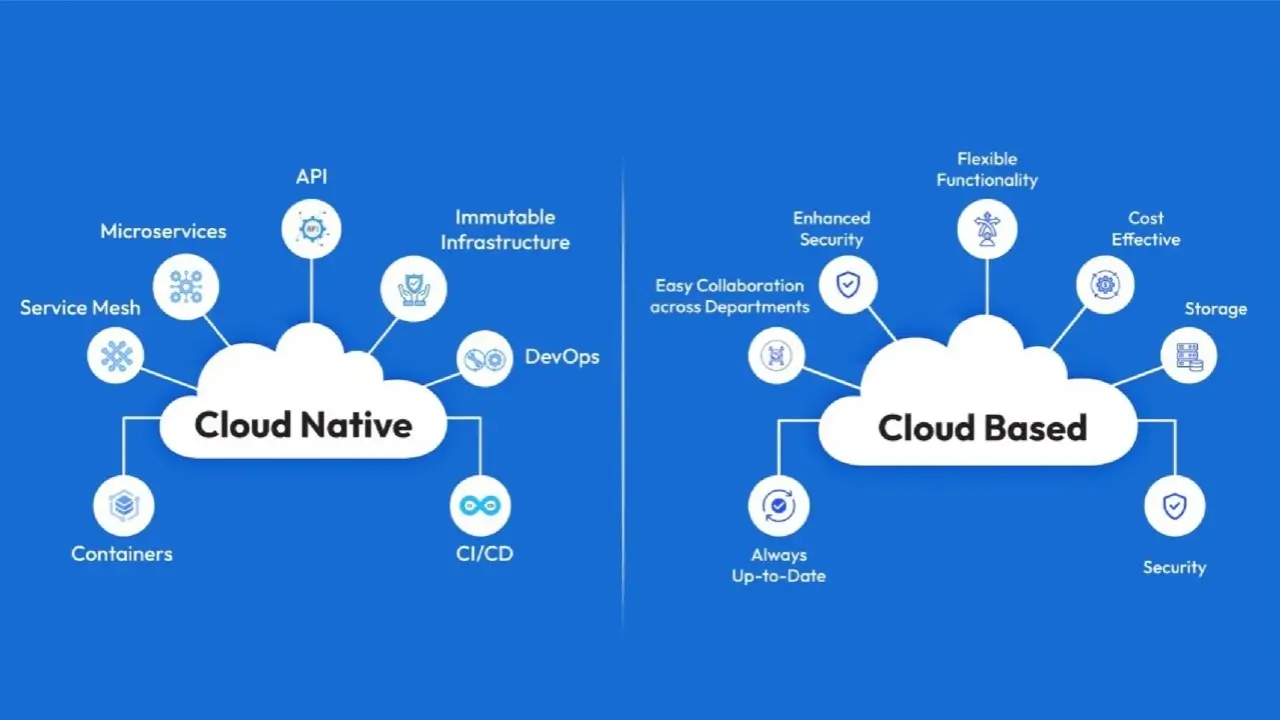Why Cloud-Native Development is the Future of Scalable Software

In an era where 94% of enterprises already rely on the cloud (Source: Flexera), businesses that cling to legacy systems aren’t just lagging—they’re risking obsolescence. Cloud-native development isn’t a trend; it’s the blueprint for building software that scales, adapts, and thrives in a dynamic market. At CodexLaza, we’ve empowered startups and enterprises to slash costs by 40%, accelerate deployments by 5x, and future-proof their tech stacks. Here’s why cloud-native is non-negotiable for scalable success.
Cloud-Native vs. Traditional Infrastructure: Why the Shift Matters
Legacy systems shackle growth. Here’s how cloud-native development breaks the chains:
- Elastic Scalability:
- Auto-scales resources during traffic spikes (e.g., Black Friday sales).
- Example: A video streaming platform handled 2M concurrent users without downtime using AWS Auto Scaling.
- Cost Efficiency:
- Pay only for what you use (vs. over-provisioned on-prem servers).
- Tools like Kubernetes optimize resource allocation, cutting idle costs.
- Fault Tolerance:
- Microservices architecture isolates failures (no system-wide crashes).
- Built-in redundancy across zones/regions ensures 99.99% uptime.
- Speed to Market:
- DevOps pipelines (CI/CD) deploy updates in hours, not weeks.
- Case Study: A fintech startup reduced release cycles from 3 weeks to 2 days.
Real-World Impact: How Kubernetes Slashed Costs by 40%
Client: A Southeast Asian fintech startup struggling with $50K/month in server costs and slow transaction processing.
Solution:
- Migrated monolithic apps to AWS EKS (Elastic Kubernetes Service).
- Implemented auto-scaling pods for payment processing microservices.
- Containerized legacy databases with Amazon RDS.
Result: - 40% lower cloud costs (now $30K/month).
- Transaction speed improved by 60%.
- Zero downtime during peak holiday traffic.
Security in Hybrid Clouds: Best Practices
Hybrid environments (cloud + on-prem) are complex but manageable:
- Zero-Trust Architecture:
- Authenticate every request, even internal ones.
- Tools: Hashicorp Vault, Azure Active Directory.
- Encryption Everywhere:
- Encrypt data at rest (AWS S3 SSE) and in transit (TLS 1.3).
- Use AWS KMS or Google Cloud HSM for key management.
- Compliance Automation:
- AWS Config or Azure Policy enforce GDPR/HIPAA rules.
- Example: A healthcare client automated compliance checks, reducing audit prep time by 80%.
- Unified Monitoring:
- Centralize logs with ELK Stack or Datadog.
- Set alerts for suspicious activity (e.g., unauthorized API calls).
How CodexLaza Accelerates Cloud-Native Journeys
Our DevOps team doesn’t just migrate—we transform:
- Assessment & Strategy: Audit your existing stack, prioritize workloads, and design a phased migration roadmap.
- Kubernetes Mastery: Optimize clusters for cost, performance, and security (Istio, Helm, Prometheus).
- Multi-Cloud Expertise: Avoid vendor lock-in with solutions spanning AWS, Azure, and GCP.
- Post-Migration Support: 24/7 monitoring, FinOps cost tracking, and disaster recovery plans.
Why Scalable Software Demands Cloud-Native
- Global Reach: Serve users in Mumbai, Munich, or Montreal with low-latency edge computing (Cloudflare, AWS Lambda@Edge).
- AI/ML Integration: Cloud-native apps seamlessly integrate AI services (SageMaker, Vertex AI) for predictive analytics.
- Sustainability: Efficient resource use reduces carbon footprint—critical for ESG goals.
Ready to Scale Smarter?
At CodexLaza, we’ve migrated 50+ enterprises to cloud-native architectures, unlocking scalability they once thought impossible. Whether you’re modernizing legacy apps or building from scratch, our certified architects and engineers are here to help.